The Chicago Blackhawks have seen their fair share of success in this past decade. But that didn’t come without some arduous previous legwork. It’s not easy to build a legacy, and it all has to start somewhere. In the first of a two-part series we look at the Blackhawks’ past draft successes that led to them eventually being named Best Team of the 2010-2020 Decade.
Blackhawks’ 2002 Draft Pick: Duncan Keith (2nd Round, #54 Overall)
It all started with Mike Smith, who was general manager of the Blackhawks from Aug. 2000 to Oct. 2003. One of his best picks was future Hall-of-Fame and top-100 NHL player Duncan Keith. After being selected in 2002, Keith played three years with a combination of Michigan State University, the Kelowna Rockets and the Norfolk Admirals. He was promoted to the Blackhawks’ roster to start the 2005-06 season and has been a mainstay ever since.
Related – Blackhawks Hit All-Start Break Trending Up
Keith has been at the core of Chicago’s three modern-day Stanley Cup championships and is cementing his legacy. In regular season play, he is 40th all-time among NHL defensemen with 597 points (99 goals, 498 assists). Among all active defensemen, he has the fourth most points, and leads the league in assists.
In the playoffs, Keith’s success is even more pronounced. He leads all active defensemen with 63 assists and 81 points in 126 games. He’s a two-time Norris Trophy winner and was the recipient of the 2015 Conn Smythe Trophy (most valuable player in the playoffs).
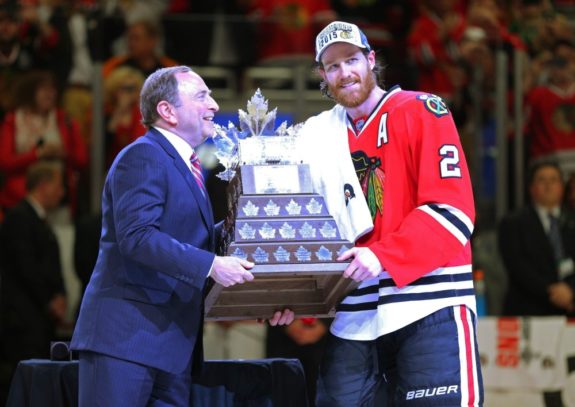
At 36 years of age, Keith isn’t the defensive stalwart he used to be. But he still plays on the top defensive pairing for the Blackhawks and eats up heavy minutes. There is life in him yet. Along with Brent Seabrook, he is the longest-tenured member of the Blackhawks’ roster.
Blackhawks’ 2003 Draft Picks
This was Mike Smith’s best and final draft in his short time as the Blackhawks’ GM. There are three noteworthy picks from Chicago’s 2003 draft, all of which have been a significant part of the team’s last decade of success.
Brent Seabrook (1st Round, #14 Overall)
Seabrook joined the Blackhawks’ roster, along with Keith, during the 2005-06 season following the lockout. Also a three-time Stanley Cup champion, Seabrook’s career numbers are solid: 464 regular season points (103 goals, 361 assists). He’s become famous for his heavy shot from the point, and sure enough, he’s tied for second (along with Brent Burns) among active defensemen with 20 playoff goals.
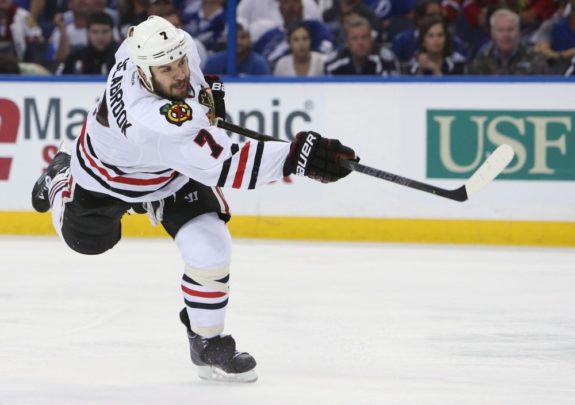
History likely won’t hold Seabrook in the same regard as Keith, but he’s been every bit as important to Chicago’s dynasty. In the 2019-20 season Seabrook was sidelined in late December, finally succumbing to nagging injuries. He’s since undergone surgeries to his shoulder and both hips. While expected back for the 2020-21 season, only time will tell what Seabrook has left to offer the Blackhawks.
Corey Crawford (2nd Round, #52 overall)
While he eventually earned his way permanently onto the Blackhawks’ roster and became a two-time Stanley Cup champion, netminder Crawford spent most of the first five years of his professional career in the AHL. Prior to joining the Blackhawks full time in 2010-11, he played in 255 AHL games while only appearing in eight NHL contests.
Related – THW’s Goalie News: Crawford’s Dominance, Brodeur’s New Role & More
Crawford’s AHL numbers were never all that impressive, perhaps contributing to the lengthy amount of time it took for him to earn the role of the Blackhawks’ number one goaltender. He finished his AHL career with a .908 save percentage and 2.78 GAA.
But when Crawford finally took over in net for the big club, he never looked back. Over 473 regular season NHL games, he’s posted a .917 save percentage and 2.44 goals against average. In the playoffs, he boasts a .919 SV% and a 2.28 GAA in 87 games.
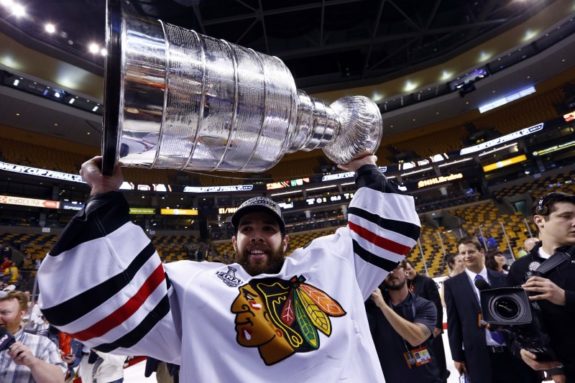
Regrettably, Crawford has dealt with concussion issues throughout the 2017-18 and 2018-19 seasons, prompting the Blackhawks to sign Robin Lehner as an insurance policy of sorts. Crawford is still posting good numbers, but Lehner has emerged as the superior goaltender thus far. Both netminders become free agents at the end of the 2019-20 season, leaving Crawford’s future with the Blackhawks uncertain.
Dustin Byfuglien (8th Round, #245 Overall)
Dustin Byfuglien has to be the biggest steal among all players mentioned in this column, making quite the name for himself after going so late in the draft. He was a fan favorite for his large frame and physical style of play, and a key cog in the Blackhawks’ ability to bring the Stanley Cup back to Chicago for the first time in 49 years.
Unfortunately, after three years with the Blackhawks, he was traded to the Atlanta Thrashers (now the the Winnipeg Jets) in a multi-faceted trade that was driven by salary cap constraints.
Byfuglien took a personal leave of absence before the 2019-20 season and has since undergone major ankle surgery. When, or if, the 34-year-old will return to hockey is unknown.
Blackhawks’ 2004 Draft Picks
The 2004 draft was significant because the legendary Bob Pulford took the helm once again for his fourth separate tenure as the Blackhawks’ GM. This would be his last draft for the franchise. He ended on a high note, drafting two depth players that culminated in the best 17 seconds in Blackhawks’ history.
Dave Bolland (2nd Round, #32 Overall)
Bolland was a formidable player with the Blackhawks for six seasons, from 2008 through 2013, a time period reflective of the Blackhawks’ ascension to the league’s elite. He was a nuisance for the opposition, earning himself the nickname “The Rat”. He played in the difficult areas of the ice and brought a lot of character to those teams.
His statistics don’t overwhelm. In 433 NHL regular season games, he scored 85 goals and recorded 123 helpers. Basically, a one-half point-per-game guy. In the playoffs though, he elevated his game. The statistics bear that out. Bolland recorded 17 goals and 26 assists in 67 playoff games. He was particularly strong during the 2010 playoffs, tallying 16 points. And of course there’s that second goal in 17 seconds in 2013, shown above.
After his second championship Bolland was traded to the Toronto Maple Leafs and then the Florida Panthers. Unfortunately, he was never able to fully overcome a left ankle injury and ongoing back problems. He was part of a salary dump to the Arizona Coyotes for the 2016-17 season, but he never suited up for the team.
Bryan Bickell (2nd Round, #41 Overall)
By now, the hockey world is well aware of Bickell’s inspiring personal story and battle with Multiple Sclerosis (MS). While the then-undiagnosed symptoms were affecting his play and availability, it was primarily his contract and cap hit that led to Chicago trading him to the Carolina Hurricanes in June of 2016. Prior to that, he was a mainstay in the Blackhawks’ lineup from 2010 through 2015.
Bickell is commonly recognized as a two-time Stanley Cup champion (2013 and 2015). He was a regular contributor to both of those teams. It is not as well-known that Bickell also received a third championship ring for his limited contributions to the 2010 team, for which he played in 16 regular season games and four playoff games. However, his name was not engraved on the Cup with the rest of the 2009-10 Blackhawks.
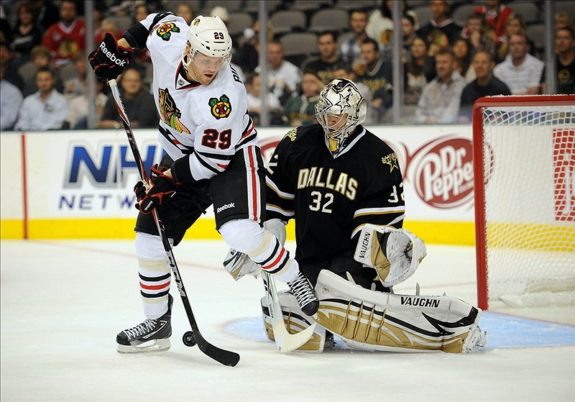
After ending the 2016-17 season and his NHL career in Hollywood-like fashion, he and his wife Amanda continue their terrific charitable work focused on MS, animal and pit bull rescue and care and other causes (bickellfoundation.org)
Blackhawks’ 2005 Draft Pick: Niklas Hjalmarsson (4th Round, #108 Overall)
Hjalmarsson was chosen as part of Dale Tallon’s first draft as the Blackhawks’ general manager. He is one of four players on this list taken by Tallon during the five drafts that he conducted.
After being selected by the Blackhawks, Hjalmarsson spent two years playing in Sweden before joining the professional hockey ranks in North America. During the 2007-09 seasons, Hjalmarsson split time between the AHL’s Rockford IceHogs and the Blackhawks. He joined the Blackhawks full-time for the 2009-10 season and was a core member of the club during all three of their Stanley Cup championships.
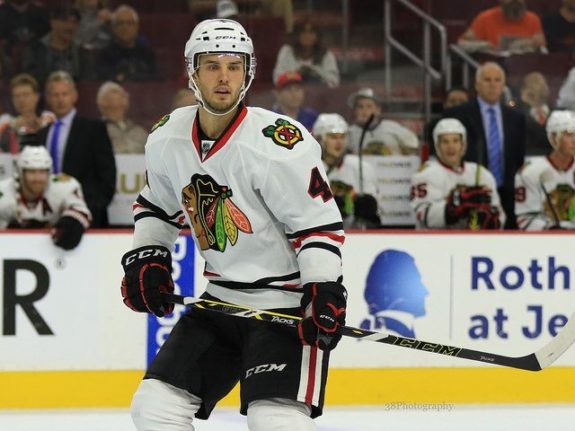
Hammer, Hjalmarsson’s commonly-used nickname, is a defensive defenseman and a fierce competitor. He’s solid in his own zone and periodically looks to make that stretch pass to generate an offensive opportunity. But he’s most known for his shot-blocking abilities. In the 2014 playoffs Hjalmarsson took a puck to the throat that resulted in him not being able to speak for two full weeks. Yet he didn’t even miss a shift.
Rumor has it then Blackhawks’ head coach Joel Quenneville was livid when Hjalmarsson was traded to the Coyotes in the summer of 2017. But in addition to salary cap issues, the organization was worried there was too much wear and tear on his body based on his style of play. Sure enough, Hjalmarsson missed significant time the following season and has only suited up for eight games in the 2019-20 season due to injury.
Blackhawks’ 2006 Draft Pick: Jonathan Toews (1st Round, #3 Overall)
Toews was the first of two selections that changed the course of a franchise. Patrick Kane was the second of those two picks, who we’ll discuss in a moment. Only Erik Johnson and Jordan Staal were taken ahead of Toews in the 2006 draft. As Tallon put it, he felt fortunate that Toews fell to the Blackhawks.
We wanted Toews the whole time. Of all the drafts I’ve been at, I had a sleepless night because I was worried he was going to go first or second. I don’t know what we would have done if Toews hadn’t been there. He was our guy. We were very lucky when he slipped to third. (from ‘2006 defining moment for Jonathan Toews and Blackhawks’, The Chicago Tribune -10/22/15)
After the draft, Toews would go on to play his sophomore year with the University of North Dakota. Subsequent to helping UND make back-to-back Frozen Four appearances, it was all Blackhawks.
Toews was named captain of the Blackhawks at 20 years of age, making him the third-youngest team captain in NHL history. During his career to-date, Toews is a three-time Stanley Cup champion, Conn Smythe winner (2010), six-time gold medalist, Selke winner (2013) and six-time NHL all-star. He is one of only 30 members of the Triple Gold Club, which consists of players or coaches that have won an Olympic gold medal, world championship gold medal and the Stanley Cup. From a team perspective, Toews is highly regarded for his strong two-way play.
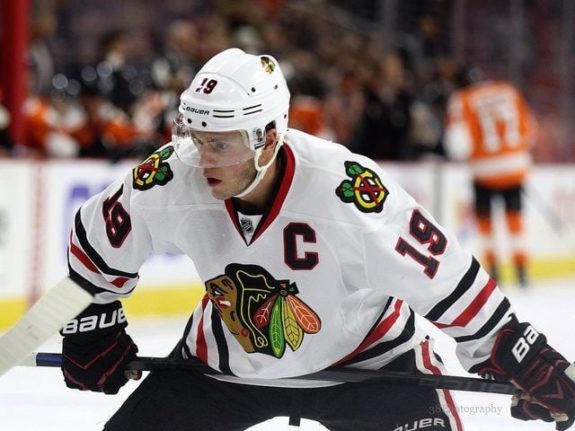
Statistically, Toews has compiled 799 points (341 goals, 458 assists) over 924 regular season games. He’s tallied 110 points, which is good for 8th among all active skaters, in 128 playoff games. Perhaps most impressive is that Toews is second among active skaters with a 56.9 regular season face-off win percentage, trailing only Patrice Bergeron.
Blackhawks’ 2007 Draft Pick: Patrick Kane (1st Round, #1 Overall)
It was history in the making. For the only time in Chicago Blackhawks history, the franchise held the number one overall pick in the NHL draft and they went with Kane.
Related – Top 3 Wingers in Blackhawks History
The play-making winger has developed into everything the Blackhawks could have hoped for when they made the selection. His resume includes three Stanley Cup championships, nine NHL all-star appearances, the 2008 Calder Memorial trophy, a 2010 Olympic silver medal, the 2013 Conn Smythe trophy and an impressive 2015-16 season that resulted in Kane winning the Art Ross and Hart Memorial trophies as well as the Ted Lindsay award.
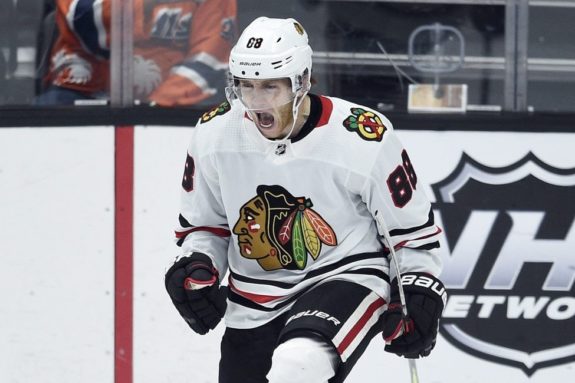
At the age of 31, Kane is among the most elite scorers and best offensive skill players to ever don a Blackhawks sweater, with no sign of slowing down. He is currently fourth all-time in regular season franchise history with 1001 points, trailing Denis Savard (1,096), Bobby Hull (1,153) and Stan Mikita (1,467). He is also fourth all-time in Blackhawks postseason scoring with 123 points, behind the same three prolific players.
Blackhawks’ 2009 Draft Pick: Marcus Kruger (5th Round, #149 Overall)
While Kruger will never stack up to the likes of Toews or Kane in terms of his skill set or significance to the overall course of the Blackhawks franchise, he was a tremendous depth player for the team. Kruger played for the Blackhawks for a span of seven years from 2011-2017 before being traded to the Carolina Hurricanes. But the Blackhawks missed his contributions and took another chance on him in the 2018-19 season.
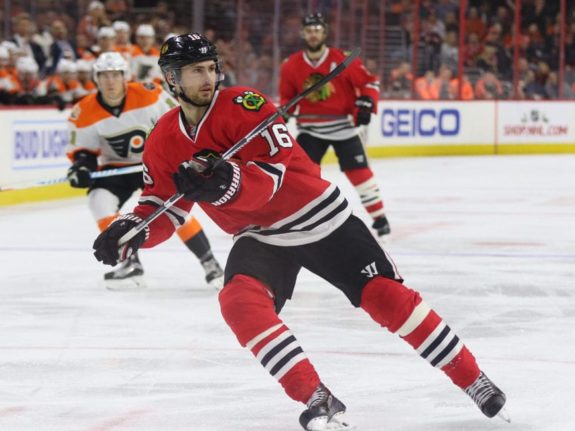
As a two-time Stanley Cup champion (2013 and 2015), he often slotted perfectly as a third or fourth-line center. Kruger went to the difficult areas of the ice and earned the hard minutes. He was also a valuable penalty killer for Coach Quenneville over the years. The team did not re-sign him for the 2019-20 season, and Kruger currently plays in Switzerland.
The impressive list of draft picks above certainly laid the groundwork for the following decade, where the Chicago Blackhawks fashioned a near dynasty with three Stanley Cup championships. Many wonder if they can ever re-create that kind of success again.
Related – Chicago Blackhawks’ New Year’s Resolutions for 2020
In the coming days, we’ll publish the next decade of draft successes, from 2011-2019, where the Blackhawks have been under the direction of now general manager Stan Bowman. Stay tuned!